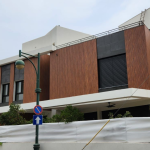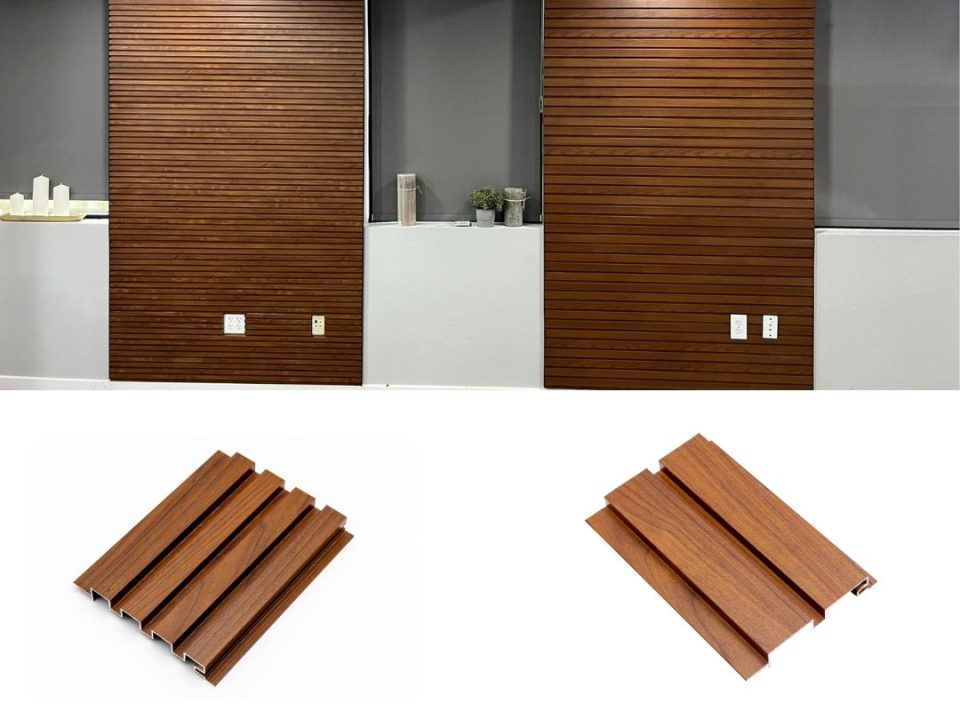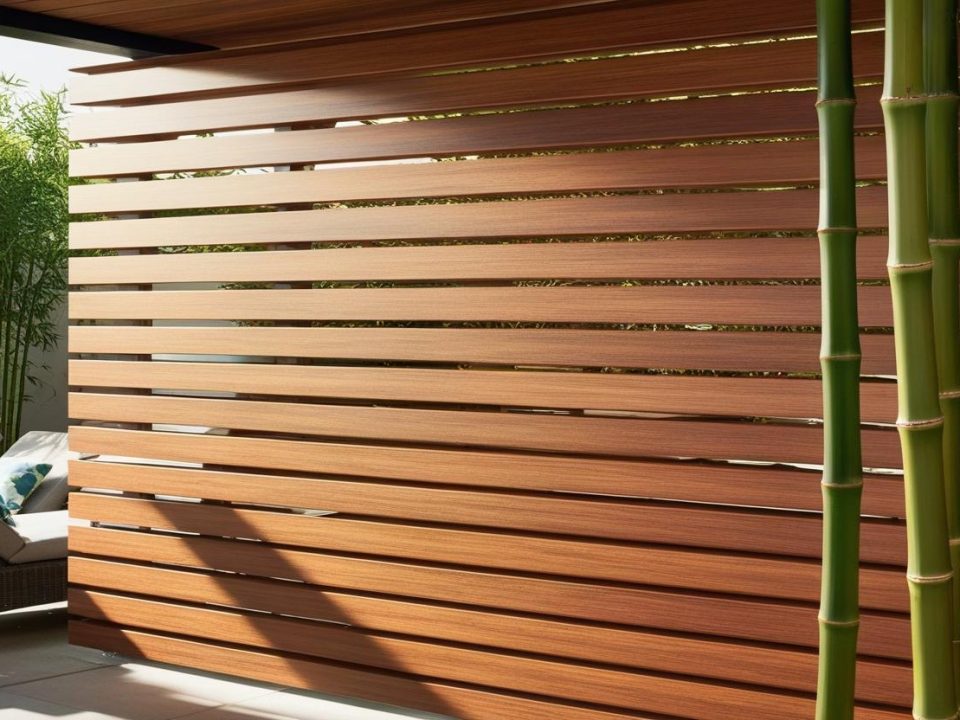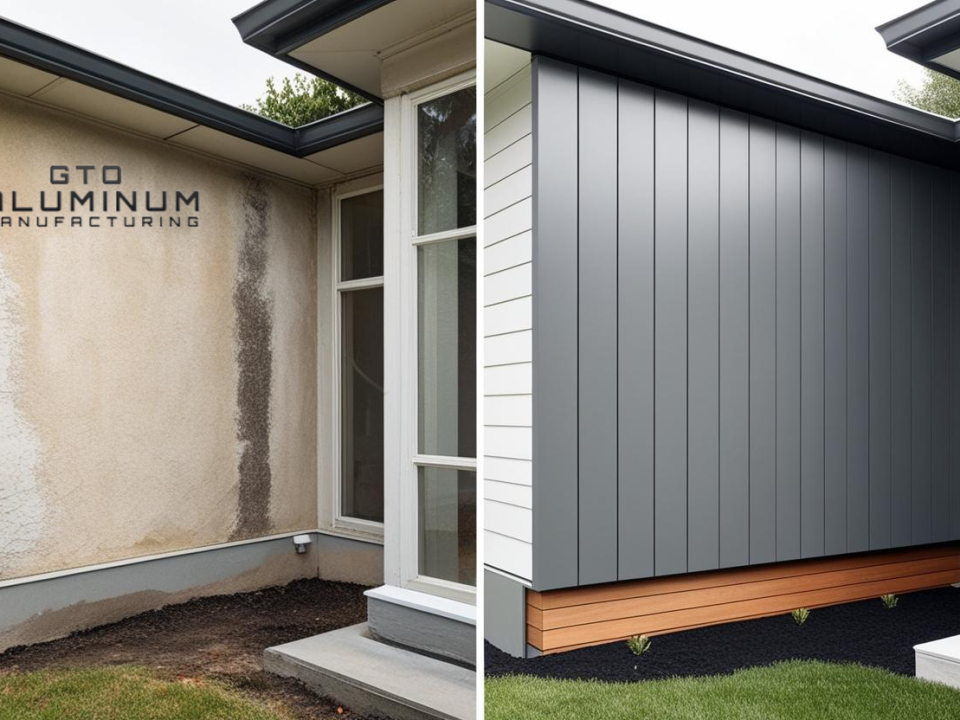
Safety First: Fire Resistance and Other Safety Features of Aluminum Cladding

What grade of aluminum is used for cladding?

Curious about the impact of the sun on your building? Discover if aluminum cladding gets hot.
If you’re considering aluminum cladding for your next building project or just curious about its properties, you’re in the right place.
This blog post will delve into the ins and outs of aluminum cladding, focusing on a common concern: does aluminum cladding get hot? Let’s get started!
Introduction to Aluminum Cladding
Before we dive into the heat aspects, let’s talk about what aluminum cladding is.
Aluminum cladding refers to a covering or coating made of aluminum that is used on the exterior of buildings.
It’s popular for its durability, lightweight nature, and aesthetic appeal. Not only does it protect the building from the elements, but it also offers a modern and sleek look.
Aluminum cladding comes in various styles and finishes, allowing for a range of architectural expressions.
Whether you’re going for a shiny, matte, or textured finish, there’s something for everyone. Now, let’s move on to the hot topic: how does this material fare in the heat?
Heat Conductivity of Aluminum
Firstly, it’s crucial to understand that aluminum is a conductor of heat.
This means it can absorb and transfer heat efficiently. In the context of building materials, this can be both a benefit and a drawback, depending on the climate and the building’s design.
However, just because aluminum conducts heat doesn’t mean your building will turn into an oven.
Various factors, such as the thickness of the cladding, its color, and the presence of insulation, can significantly influence the overall thermal performance of the aluminum-clad building.
Aluminum Cladding in Different Climates
How aluminum cladding behaves can vary significantly from one climate to another.
In hot, sunny environments, aluminum cladding can indeed become quite warm to the touch. This is particularly true for darker colors, which absorb more solar radiation.
Conversely, in cooler climates, aluminum cladding can help in retaining heat within the building, contributing to energy efficiency.
The key is to understand the specific needs of your building’s location and to choose the right type of cladding accordingly.
Color and Finish Impact
The color and finish of aluminum cladding play pivotal roles in its heat absorption properties.
Lighter colors reflect more sunlight, thereby absorbing less heat. Matte finishes can also help in reducing heat absorption compared to glossy ones.
This is why selecting the right color and finish is not just a matter of aesthetics but also functionality.
By choosing wisely, you can enhance the energy efficiency of your building and ensure greater comfort for its occupants.
Insulation and Ventilation
Another critical aspect is the role of insulation and ventilation in conjunction with aluminum cladding.
Proper insulation behind the cladding can prevent heat from penetrating the interior of the building.
Meanwhile, adequate ventilation can help dissipate any heat that the cladding absorbs.
This combination can significantly mitigate the potential for aluminum cladding to contribute to excessive interior temperatures, making it a viable option even in warmer climates.
Maintenance and Longevity
Maintenance is another factor that can affect the thermal performance of aluminum cladding.
Over time, dirt and debris can accumulate on the surface, potentially affecting its reflective properties.
Regular cleaning and maintenance can help maintain its heat-reflective qualities and overall performance.
Moreover, the longevity of aluminum cladding is a significant advantage.
Its resistance to corrosion and weathering means it can continue to perform its thermal and protective functions for many years, making it a cost-effective choice in the long run.
Technological Advances in Aluminum Cladding
Advancements in technology have led to the development of innovative aluminum cladding solutions.
These include thermally broken systems and coatings designed to reflect UV rays, which can further reduce heat absorption and improve energy efficiency.
By staying informed about the latest developments and considering these advanced options, you can leverage the benefits of aluminum cladding while minimizing any drawbacks related to heat.
Frequently Asked Questions
Lastly, let’s address some common questions regarding aluminum cladding and heat:
1. Does aluminum cladding cause buildings to overheat?
Not necessarily, especially with proper design and installation.
2. Can I use aluminum cladding in a hot climate?
Yes, but it’s crucial to consider factors like color, insulation, and ventilation.
3. Is aluminum cladding suitable for energy-efficient buildings?
Particularly when combined with appropriate insulation and energy-efficient design principles.
Conclusion
In conclusion, while aluminum cladding does get hot due to its heat conductivity, this doesn’t disqualify it as an excellent material for building cladding.
With the right design choices and considerations, it can be a highly effective, durable, and aesthetically pleasing option for various types of buildings and climates.
At GTO Aluminum, we understand the nuances of working with aluminum cladding. Our team of experts can help guide you through the selection process, ensuring that you choose the best type of cladding for your specific needs.
We offer a range of solutions, from energy-efficient coatings to innovative design services, all aimed at maximizing the performance and appeal of your aluminum-clad building.
Whether you’re embarking on a new construction project or considering retrofitting an existing structure, we’re here to help.
Let GTO Aluminum assist you in making informed decisions that balance aesthetics, functionality, and energy efficiency.
Contact us today to learn more about how aluminum cladding can enhance your building project.





